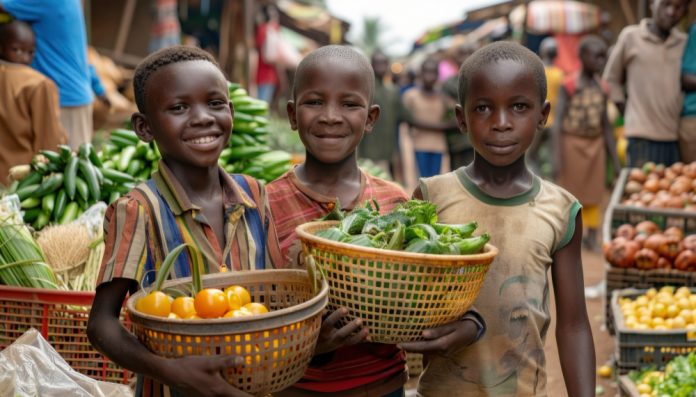Imagine walking into your favorite coffee shop and spotting a “Fair Trade Certified” label on your go-to coffee blend. For many, this label implies support for a fairer, more ethical supply chain, where farmers and workers in developing countries earn a sustainable wage. But, upon closer examination, the reality of fair trade is more complex than it first appears. This concept, often dubbed the “Fair Trade Paradox,” brings into question whether fair trade lives up to its promises or unintentionally sidesteps the most marginalized communities it aims to uplift. Here’s why this paradox exists, and what we can do to bridge the gap between fair trade’s intentions and its impact.
Fair trade emerged with a noble goal, to provide farmers and workers in developing nations with fair compensation for their labor, better access to global markets, and, ultimately, a pathway out of poverty. By committing to fair wages, decent working conditions, and sustainable practices, fair trade was meant to shield producers from exploitative practices. Yet, in practice, only a fraction of small-scale farmers’ benefit. Meeting certification requirements often proves so costly and complex that the most impoverished producers are effectively shut out. Instead of uplifting those who are most vulnerable, fair trade may inadvertently benefit those who are already more advantaged within these communities.
The costs and rigorous standards involved in obtaining fair trade certification are one major hurdle. Farmers seeking certification must cover fees, adjust their farming practices, and operate under strict guidelines, all upfront investments that aren’t guaranteed to pay off. For many small farmers, the financial burden is simply too high, meaning they cannot afford to join the fair-trade system. This ends up favoring larger cooperatives or better-established farms, while excluding those who arguably need fair trade’s benefits most. For fair trade to fulfill its original vision, certification processes may need to be more accessible, considering the circumstances of the most vulnerable farmers rather than inadvertently favoring those who are already positioned to access global markets.
Another critical issue in the fair-trade model is the “minimum fair price” for products. While fair trade does set a minimum price, it often fails to fully account for fluctuating market demands and the varying costs of living across regions. As a result, the prices that farmers receive may not always reflect what’s necessary for a true living wage. Farmers sometimes see only modest gains, with much of the premium for fair trade goods being absorbed by administrative costs, logistics, and marketing rather than directly supporting the producers. If fair trade is to make a meaningful impact on farmers’ lives, the pricing structures need to be more adaptable and directly aligned with the realities of local economies.
Read also: The impact of unfair working conditions in agriculture
Market access is another limitation within fair trade. The demand for fair trade products remains relatively niche, concentrated primarily in certain Western markets. This limited demand means that even farmers who attain certification may struggle to sell all of their products under fair trade conditions, often being forced to sell surplus at standard market rates, which are typically much lower. Farmers enter the fair-trade system hoping for stability and fair returns, yet they may still experience financial volatility due to limited sales channels for fair trade-certified goods. Expanding fair trade’s reach to a broader market could help improve income consistency for certified farmers, but this would require efforts to raise consumer awareness globally and enhance fair trade’s appeal across diverse demographics.
Consumers, meanwhile, play a vital role in the fair-trade equation. Many people pay a premium for fair trade products, believing this extra cost directly supports farmers. However, the fair-trade model’s complexities mean that only a fraction of the premium may reach producers, leaving consumers with the misconception that every dollar they spend is helping farmers in need. For consumers to make truly informed choices, the fair-trade system should provide greater transparency about where each dollar goes. Consumers, in turn, can advocate for a fair-trade model that channels more funds directly to farmers, thereby making a more tangible impact.
So, what can be done to address these shortcomings in the fair-trade model and bridge the gap between intention and reality? Here are some potential solutions.
First, fostering direct partnerships between buyers and farmers could create fairer, more transparent relationships and eliminate unnecessary intermediaries. By building these partnerships, farmers can receive a larger share of the final price, contributing to a more sustainable and equitable system. Direct partnerships could also enable consumers to connect more closely with the people behind their purchases, providing a stronger incetive for ethical consumption.
Another approach is to revisit the criteria and standards for fair trade certification. Creating flexible, region-specific standards that consider the diverse realities of farming communities could make certification more accessible to those currently excluded. Gradual, phased standards could allow farmers to improve their practices over time, reducing the financial and administrative burdens associated with certification. With these changes, fair trade could be more inclusive of small, marginalized farmers who are most in need of support.
Ultimately, fair trade must evolve to fulfill its original mission of justice and equity in global trade. Fair trade, as it currently stands, is a powerful idea but a flawed solution. The next time you reach for that “Fair Trade” label, remember that while the movement has taken steps in the right direction, we have a role in advocating for its transformation. Only by pushing for fair trade to be genuinely inclusive and effective can we create a system that truly uplifts those it was meant to support, making justice not just a label but a reality.





